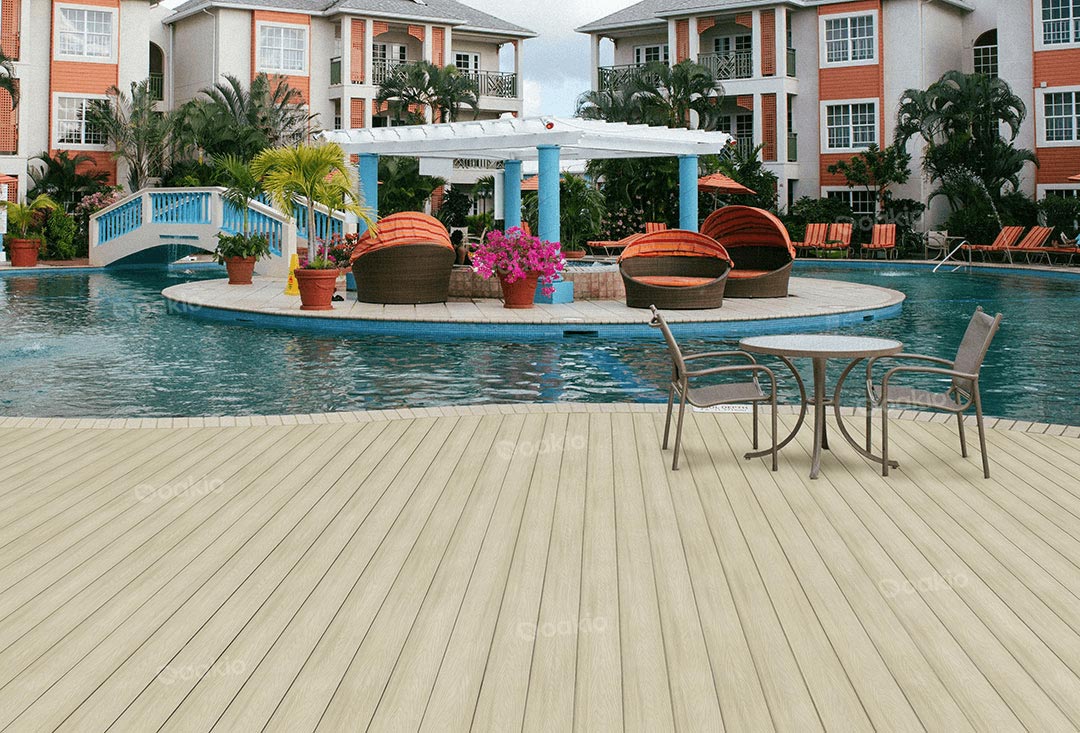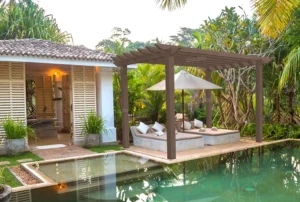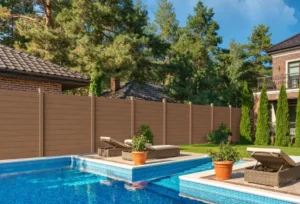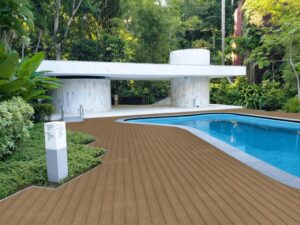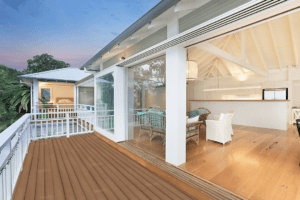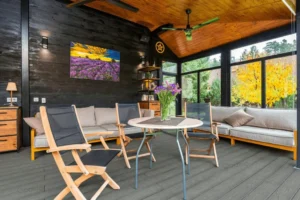Timber Decking vs Composite Decking: Which is Better?
Choosing between timber decking and composite decking is a critical decision for anyone looking to enhance their outdoor living space. Some homeowners may also wonder if they can replace wood deck with composite decking. Both options have their unique advantages and considerations, and the decision ultimately depends on various factors. In this article, we’ll delve into the characteristics, benefits, and potential drawbacks of each decking material, providing valuable insights to help you make an informed choice between composite decking and timber decking.
Understanding Timber Decking and Composite Decking
Timber decking and Composite decking represent two popular choices for outdoor flooring, each with its unique characteristics.
– Timber Decking
Timber decking, made from natural wood, carries a classic and timeless appeal. Timber decking options include a variety of wood species, each with its unique grain patterns and hues.
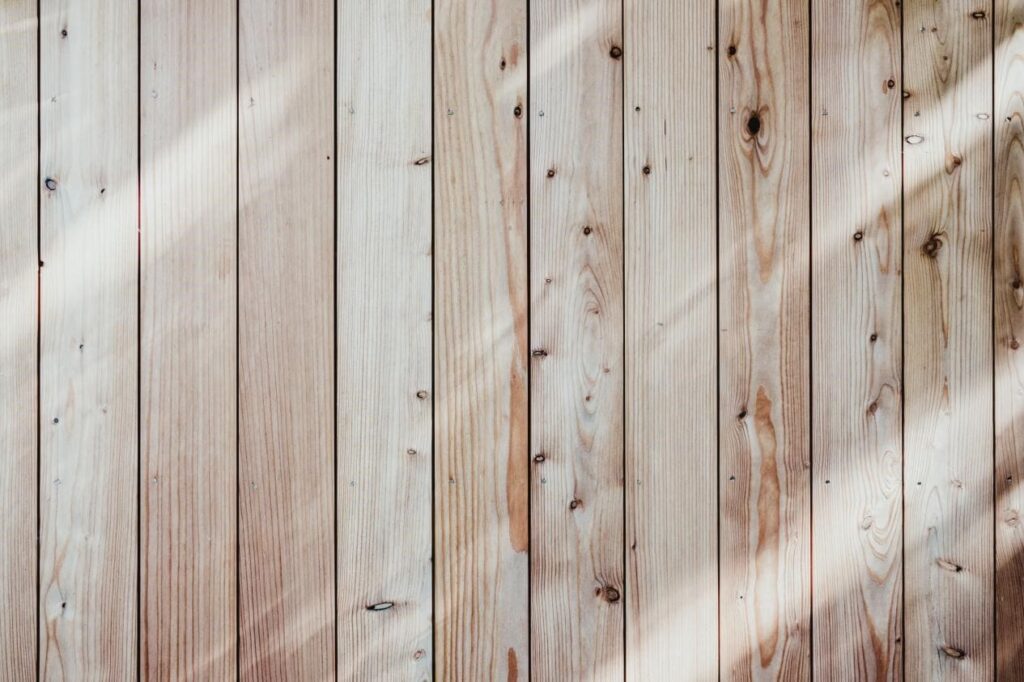
– Composite Decking
On the other hand, composite decking, often made from a combination of wood fibers and recycled plastic materials, offers a modern alternative to traditional wood decking. This wood-plastic composite (WPC) has several advantages, such as enhanced durability, resistance to rot, and minimal maintenance requirements.

Pros and Cons of Timber Decking
Timber decking is always a popular choice for its aesthetics and nature when homeowners hope to create a cozy space. But it also has drawbacks, especially in outdoor space.
Pros of Timber Decking
- Natural Aesthetics: Timber decking offers an authentic and warm appearance, providing the timeless beauty of real wood. The natural grain and texture contribute to a classic and inviting outdoor space.
- Lower Initial Cost: Generally, timber decking is more budget-friendly upfront compared to composite alternatives. This cost advantage makes it an attractive option for homeowners who prioritize initial affordability.
- Repairability: Timber decks are easier to repair and refinish, allowing for extended use. If a section becomes damaged or worn, repairs can be carried out with relative ease, and refinishing can revive the deck’s appearance.
Cons of Timber Decking:
- Maintenance Intensive: One of the primary drawbacks of timber decking is its maintenance-intensive nature. Regular sealing, staining, and general upkeep are essential to prevent decay, maintain the wood’s appearance, and prolong its lifespan.
- Prone to Insects and Rot: Timber is susceptible to damage from insects, decay, and weathering. Without proper maintenance and treatment, the decking material can be compromised by termites or other pests, leading to structural issues.
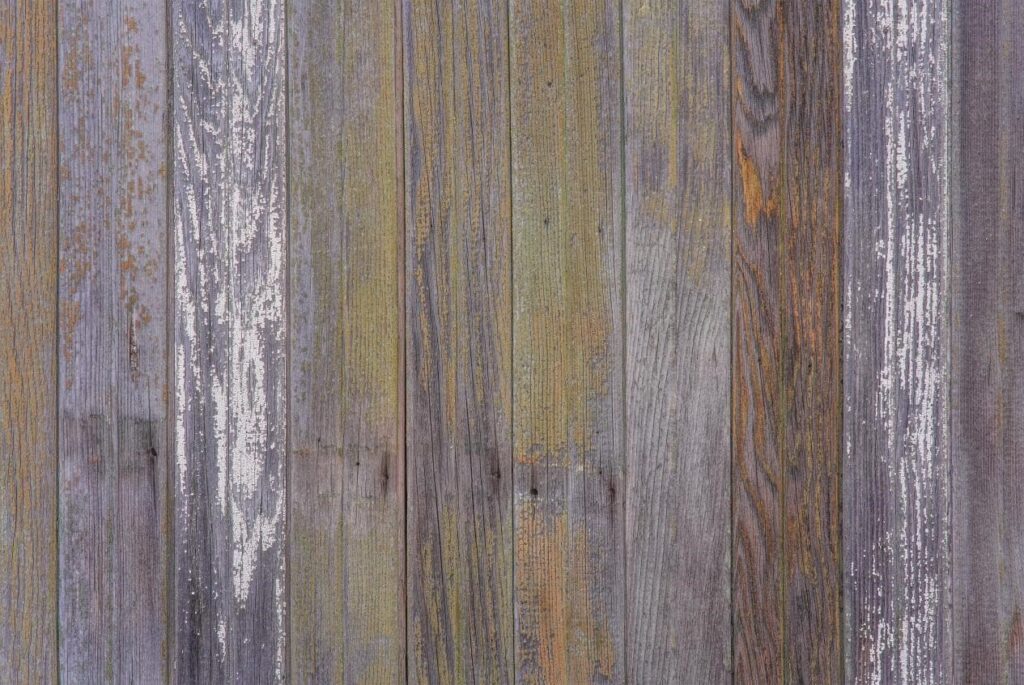
- Limited Lifespan: Timber decking generally has a short lifespan for about 10 years. While it provides a cost-effective solution, homeowners should be aware that they might need to replace or extensively renovate their timber decks.
In summary, timber decking remains a classic and cost-effective choice, showcasing natural beauty. However, it comes with the trade-off of being more maintenance-intensive and having a potentially short lifespan. When making your decision, consider factors such as your aesthetic preferences, budget constraints, and willingness to invest time in ongoing maintenance for the longevity of your outdoor space.
Pros and Cons of Composite Decking
If you want to replace wood decks with composite decking, it is necessary to evaluate the pros and cons of composite decking. Composite decking offers a variety of advantages and drawbacks that should be carefully considered before making a decision for your outdoor space.
Pros of Composite Decking:
- Durability: Composite decking is highly resistant to rot, mold, and insects, ensuring an extended lifespan for your deck.
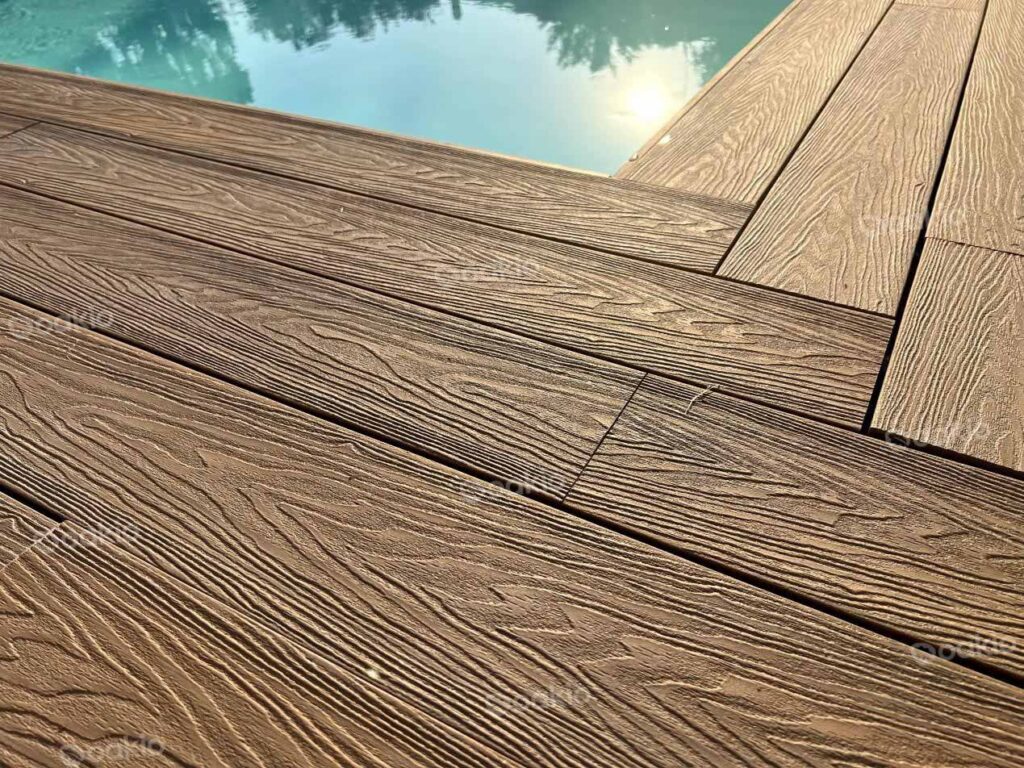
- Sustainability: Many composite decking materials are recycled content such as wood fiber, contributing to environmental sustainability. By choosing composite decking, you support the use of recycled materials, making it an eco-friendly option.
- Reduced Maintenance: Composite decks demand less upkeep compared to their traditional wood counterparts. They don’t require staining, sealing, or frequent treatments, making them a low-maintenance choice for homeowners.
Cons of Composite Decking:
- Higher Initial Cost: One of the primary drawbacks of composite decking is its higher initial cost compared to traditional wood decks. While the investment pays off in reduced maintenance expenses over time, the upfront cost may be a deterrent for some homeowners.
- Susceptible to Scratching and Staining: Despite its durability, composite decking can be prone to scratching and staining. Careful maintenance and proactive measures are necessary to preserve its appearance and protect it from potential blemishes.
- Heat Retention: Composite decking has been known to retain heat, particularly when exposed to direct sunlight for extended periods. This can make the surface warm, potentially uncomfortable for bare feet. Homeowners in hotter climates should consider this factor when planning their outdoor space.
In conclusion, if you hope to replace wood decks with composite decking, your decision should be based on a thoughtful evaluation of your specific needs and preferences. Consider factors such as durability, sustainability, and reduced maintenance against potential drawbacks like the initial cost and susceptibility to scratching or heat retention.
Comparison Between Composite Decking and Timber Decking
Here is a list that compares the characteristics between timber decking and composite decking, which can help you make the decision if you want to replace wood decks with composite decking.
| Characteristics | Composite Decking | Timber Decking |
| Deformation | Not easy to deform | Easy to deform |
| Durability | Can last 15-25 years | Can last around 10 years |
| Environmental Friendliness | Made of recycled material | Made of wood |
| Painting/Polishing | Don’t need painting/polishing | Need painting/polishing |
| UV Stability | UV resistant | Low UV resistance |
| Outdoor Adaptability | Good for outdoor space | Not suitable for outdoor use |
| Moisture Resistance | Moisture resistant | Low moisture resistance |
| Mold resistance | Mold resistant | Low mold resistance |
| Price | Relatively high | It depends |
Conclusion
In conclusion, whether you choose composite decking or timber decking depends on your specific needs, preferences, and willingness to invest time and effort in maintenance. Assessing factors such as durability, environmental impact, and overall suitability for your outdoor space will guide you in making the right decision.
Trending Reading
What Are the Differences Between the WPC Board and PVC Board?
[2024 Update] How Long Does WPC Decking Last?
